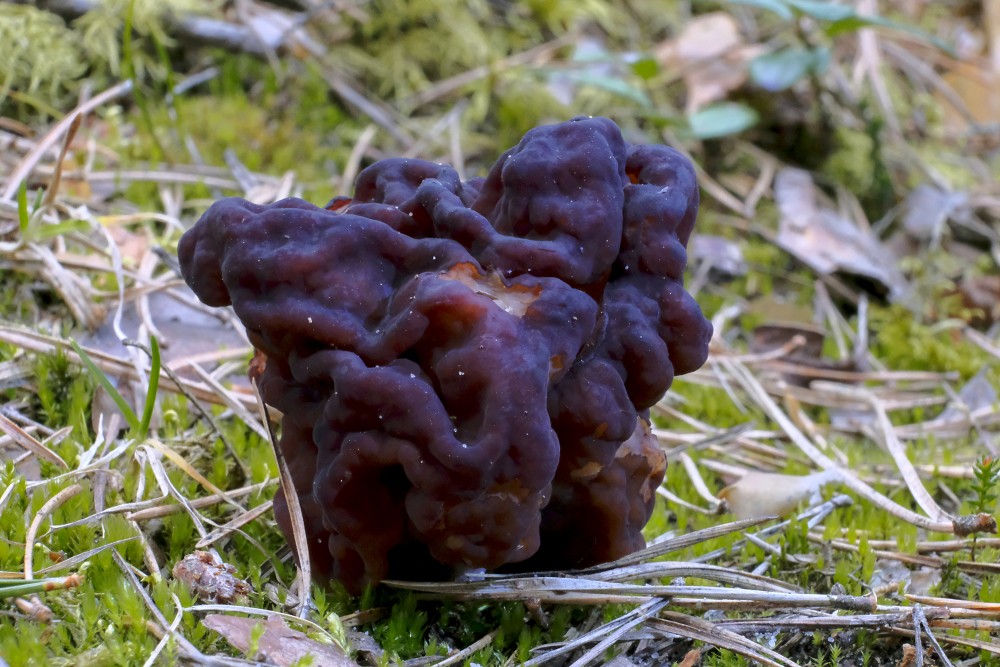Gyromitra esculenta
Gyromitra esculenta is an ascomycete fungus from the genus Gyromitra, widely distributed across Europe and North America. It normally fruits in sandy soils under coniferous trees in spring and early summer. The fruiting body, or mushroom, is an irregular brain-shaped cap dark brown in colour that can reach 10 centimetres (4 inches) high and 15 cm (6 in) wide, perched on a stout white stipe up to 6 cm (2+1⁄2 in) high.
Although potentially fatal if eaten raw, Gyromitra esculenta is a popular delicacy in Scandinavia, Eastern Europe, and the upper Great Lakes region of North America. Although popular in some districts of the eastern Pyrenees, it is prohibited from sale to the public in Spain. It may be sold fresh in Finland, but it must be accompanied by warnings and instructions on correct preparation.
Although it is still commonly parboiled before preparation, evidence suggests that even this procedure may not make Gyromitra esculenta entirely safe for consumption. When consumed, the principal active agent, gyromitrin, is hydrolyzed into the toxic compound monomethylhydrazine (MMH), a type of rocket fuel. The toxin affects the liver, central nervous system, and sometimes the kidneys. Symptoms of poisoning involve vomiting and diarrhea several hours after consumption, followed by dizziness, lethargy and headache. Severe cases may lead to delirium, coma and death after five to seven days.
| Gyromitra esculenta | |
| Kingdom: | Fungi |
| Division: | Ascomycota |
| Class: | Pezizomycetes |
| Order: | Pezizales |
| Family: | Discinaceae |
| Genus: | Gyromitra |
| Species: | G. esculenta |
Description
Resembling a brain, the irregularly shaped cap may be up to 10 cm (4 in) high and 15 cm (6 in) wide. Initially smooth, it becomes progressively more wrinkled as it grows and ages. The cap colour may be various shades of reddish-, chestnut-, purplish-, bay-, dark or sometimes golden-brown; it darkens to black in age. Specimens from California may have more reddish-brown caps. Attached to the cap at several points, the stipe is 3–6 cm (1–2+1⁄2 in) high and 1–5 cm (1⁄2–2 in) wide. Gyromitra esculenta has been reported to have a solid stipe whereas those of true morels (Morchella spp.) are hollow, although a modern source says it is hollow as well. The smell can be pleasant and has been described as fruity, and the fungus is mild-tasting. The spore print is whitish, with transparent spores that are elliptical and 17–22 μm in length.
en.wikipedia.org
